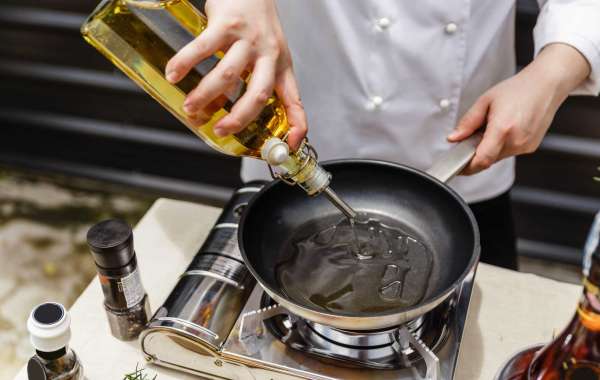What is blended cooking Oil?
Oil is an important part of the kitchen, and most recipes require it. Professional chefs often mix oils to change the taste and texture of certain dishes to their own liking. It's great that it can deep fry and smoke heavily, but what are these "blending oils"? Can we use it for most things?
A blended cooking oil is a mixture of at least two edible oils, with no one oil making up less than 20% of the total weight of the mixture. The blend should be clear, odourless, and free of rancidity and any other animal or non-edible oils or fats. It should also meet the standards that have been set.
Are blended oils good for you?
Research shows that mixing oils can be good for your health as long as the right proportions are kept. People are saying that these cooking oils are healthier than traditional cooking oils because the two oils that are mixed together have a better balance of essential fatty acids and PUFAs, MUFAs, and SFAs (saturated fatty acids). Dietitians are starting to suggest blended oils instead of or along with the traditional oils.

Refined Oil v/s Blended Oil: Which One is better?
Refined oils are made from a single food ingredient, such as soybean, rice bran, groundnut, mustard, etc. Blended oils, on the other hand, are made by mixing two different oils, such as soybean and rice bran or sunflower and olive oil.
Oils that have been refined are cleaned with chemicals that are bad for you. This means that the oil may have been treated with acid or even bleached.
Blended oils are indeed preferable than refined oils because of this.

It's important to find the right balance.
Having the right amount of fatty acids is important. If you want to do this with a mixture of oils, you need to make sure that the oils have the right amount of fatty acids. If you are not used to cooking with mixed oils, you can also use a mix of two different oils. For example, sunflower or safflower oil (made from sunflower seeds) can be used for one meal, and groundnut, gingelly, or mustard oil can be used for another meal. Another way to mix oils is to use one type of oil for all dishes with gravy and another type of oil for all dishes with dry food.
Problems with using the wrong blend
No matter what kind of oil blend or mix you use, every gramme of oil still has 9 calories. If you take too much of a mixed or combined oil, it will still hurt your health like taking too much of a single oil does, which is usually weight gain. Even if you want to use a mix of oils, make sure the amount is well controlled.
Vegetable oils are the most common and important source of lipids in food. More and more people are eating them as food these days. But some vegetable oils aren't what people want in terms of their physical and chemical properties, texture, and stability.
Iodine, peroxide, p-anisidine value, acidity, solidification temperature, colour, and appearance are some of the things that affect the value of food. The partial hydrogenation process is used to make oils more resistant to oxidation and more flexible. But it is well known that it makes trans-fatty acids, which are bad for people's health. Also, because it raises the melting point of the oils, partial hydrogenation isn't good for salad dressing, desserts, and candy-based foods.

Blending can keep blended oils looking good and improve their quality, shelf life, stability, usefulness, and nutritional value. Blending doesn't add to the cost of making something. So, most food manufacturers agree with it. But it's important to remember that when polyunsaturated oils are mixed with highly saturated oils, the amount of linoleic and linolenic acids will drop below what's ideal. This has the same effect as partial hydrogenation, but no trans-fatty acid isomers are made.
Blending can also be used to improve the way oil works in baked goods. This is because bakery and candy fats have desirable physical and chemical properties, such as melting points, solid fat content (SFC), polymorphic form, and spread ability that will affect the final products. For example, sunflower oil (SFO) can be used to make mayonnaise and salad dressings, but it can't be used to make margarines or shortenings because it doesn't have enough structure. On the other hand, because it is already semi-solid, palm oil (PO) is a great choice for making margarines and shortenings. PO, on the other hand, is not good for making mayonnaise because it gets solid when it gets cold.








